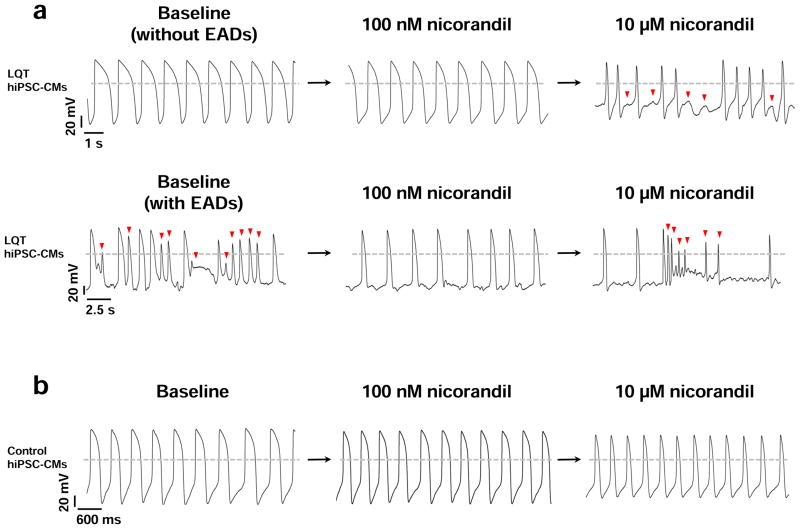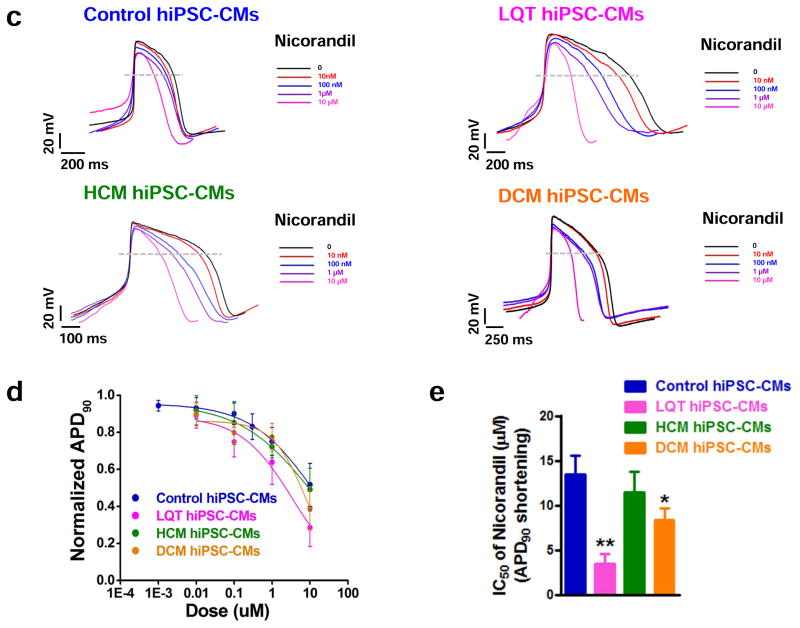Figure 7.
Differences in susceptibilities of disease-specific hiPSC-CMs to short-QT arrhythmia induced by nicorandil. (a) Treatment of LQT hiPSC-CMs with 100 nM nicorandil normalizes the QT interval and abolishes baseline EADs. High doses (>10 μM) of nicorandil induce proarrhythmias. Upper panel: LQT hiPSC-CM AP baseline without EADs, 100 nM nicorandil is able to normalize the APD values. Treatment with 10 μM nicorandil induces arrhythmias (n=18, 3 patient lines per cohort). Bottom panel: LQT hiPSC-CM AP baseline with EADs (indicated by red arrows). 100 nM nicorandil can abolish baseline EADs. However, at treatment with 10 μM nicorandil, the QT interval is excessively shortened, resulting in nicorandil-induced arrhythmia as indicated by red arrows (n=9, 3 patient lines per cohort). (b) Treatment of control hiPSC-CMs with nicorandil. APD shortening is observed without arrhythmia or drug-induced toxicity at both 100 nM and 10 μM nicorandil (n=10, 3 control subject lines per cohort). (c) Representative tracings showing the dose-dependent effect of nicorandil on control, LQT, HCM, and DCM hiPSC-CM APs (Baseline: black, 10 nM: red, 100 nM: blue, 1 μM: purple, 10 μM: magenta). Dose-dependent shortening of the AP was observed in all groups (n=18, 3 patient or control subject lines per cohort). (d) Dose-response relationships showing shortening of the steady-state APD90 by nicorandil on control, LQT, HCM, and DCM hiPSC-CMs. Data were fit by the Hill function (n=18, 3 patient or control subject lines per cohort). (e) IC50 values of APD90 shortening induced by nicorandil on control, LQT, HCM, and DCM hiPSC-CMs (n=18, 3 patient or control subject lines per cohort). Dashed lines show 0 mV. * indicates P<0.05, ** indicates P<0.01.


